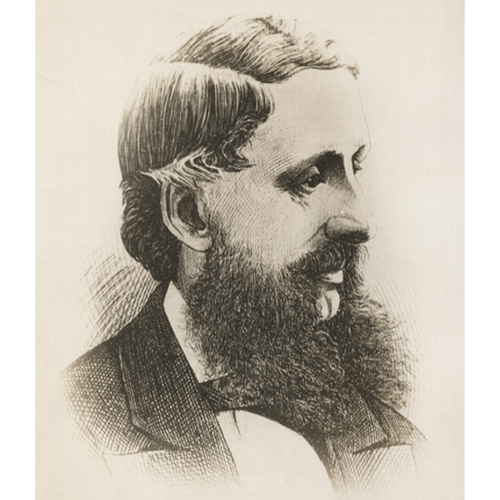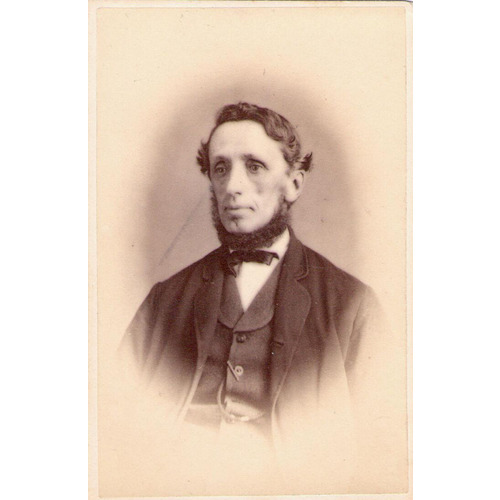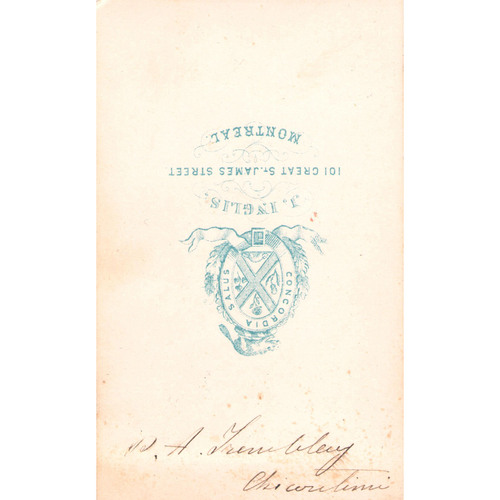
Source: Link
TREMBLAY, PIERRE-ALEXIS, surveyor, politician, and journalist, commonly known as “Pitre” and familiarly as “Pitre à Kiki” (Kiki being the name given to his father at Charlevoix); b. 27 Dec. 1827 at La Malbaie, L.C., son of Alexis Tremblay and Josephte Duguay; d. 4 Jan. 1879 at Quebec.
Pierre-Alexis Tremblay was educated at the Petit Séminaire of Quebec, where he formed friendships with students later important in the religious world, such as the prelates Dominique* and Antoine Racine*, and the abbés Benjamin Pâquet* and Pierre-Télesphore Sax. Tremblay remained closely attached to his religion, despite the trials and personal attacks to which he was to be subjected later by fervent Catholics, and even by several members of the clergy. His principles and beliefs took a concrete form both in his personal and in his public life. At the time of the disastrous fire of 1870 that ravaged the Saguenay area and ruined several thousand settlers, he travelled throughout the province and wrote many accounts of the calamity, in order to raise enough donations to cover the most urgent needs. In fact Pierre-Alexis Tremblay makes us think of a fighter, an armed knight ready to defend what he believed to be right and just. He was “tall, thin, slender. His drawn features and pale face reveal a high-strung temperament. His well-developed forehead is topped by black hair mingled with silvery streaks.” A portrait of Tremblay, preserved in the archives of the Quebec provincial museum, confirms this description.
On 5 Oct. 1853 Pierre-Alexis Tremblay became a surveyor of the Saguenay region, particularly in the townships of Demeulles, Parent, Signay, Labarre, and Caron; he carried out the survey of the Rivière Péribonca and plotted the course of Lac Saint-Jean. His cherished dream, to see the fertile districts of the Saguenay opened to settlement, inevitably clashed with the ambitions of the timber merchants, who then formed “a kind of business aristocracy.” Among the most important might be mentioned the Prices, who, in the county of Chicoutimi-Saguenay, “subscribed to the Conservative treasury, and enjoyed in exchange not only commercial privileges but electoral support.” Tremblay was opposed to the existing system, despite the enticing offers that were made to him.
Not a man who was afraid of battle, he loved difficulties. Politics gave him ample opportunity to exercise his talents as a jouster; he concerned himself actively with politics from 1857 until his death, in the counties of Chicoutimi-Saguenay and Charlevoix. Pierre-Alexis Tremblay first stood as a candidate on the Conservative ticket, but soon left the party as a result of his opposition to confederation. As an independent, then as a Liberal, he was elected seven times to the Legislative Assembly and to the House of Commons; in 1874, when the end of the double mandate obliged him to make a choice, he decided for the federal arena. It was he who proposed secret balloting at elections, a measure which, before helping the cause of democracy, was first to work against him.
Each of the elections in which Tremblay took part would be worth describing as a good illustration of the electoral customs of the time or an accurate depiction of the political role of the clergy in the years 1870 to 1880. The Charlevoix election of 1876, in which Tremblay was defeated by Hector-Louis Langevin* after a memorable struggle, may be taken as typical. “Undue influence” was exhibited there with particular effectiveness; Tremblay and his collaborators noted several statements on this occasion and produced them before the courts and before Bishop Elzéar-Alexandre Taschereau*. The simple country-folk of Charlevoix County were unable to resist parish priests such as the one at Baie-Saint-Paul: “Document no. 3 proves that on 16 January last, the Reverend [Joseph] Sirois [-Duplessis] . . . depicted me [Tremblay] from the pulpit, me and those who supported me, as dangerous men, persecutors of religion, false prophets and false Christs, venomous serpents seeking to deceive the people. According to this reverend gentleman, if I were elected the people would be threatened with a revolution; the Pope, the bishops, the priests would be led to the scaffold and slaughtered; those who would have supported me would be guilty of all these crimes, and in death’s hour they would be a prey to remorse and despair.” This famous election of 1876 was an occasion for Tremblay to display his usual perseverance, which finally ensured his triumph in the Supreme Court. In September 1878, in the same county, he was elected by acclamation.
Pierre-Alexis Tremblay is perhaps less known as a journalist, even though he did contribute to several papers such as Le Canadien, La Nation, Le National, and L’Événement; it was particularly in L’Éclaireur that he gave his full measure as a polemicist and popular writer. The most remarkable document we have of him is probably the testament he drew up on his deathbed and addressed to the public. This text, published by the newspapers of the province, was inspired by a charity that led him to pardon all those who had offended him, and to ask forgiveness of all those whom he had hurt in the course of his eventful career. In both cases the individuals were numerous. Finally, he affirmed his fidelity and attachment to the church, despite earlier statements or attitudes which could have given rise to unfavourable interpretations.
Pierre-Alexis Tremblay died on 4 Jan. 1879, as a result of a leg infection of which the origin is unknown. His funeral took place in the cathedral at Quebec, and he was buried in St Patrick’s cemetery, in the family vault of his wife, Mary Ellen Connolly. He left no children. In the spring of 1880 his body was transferred to the cemetery of La Malbaie.
The newspapers to which Pierre-Alexis Tremblay contributed are an important source for a study of him. ASHS, Dossier 86, pièces 34, 35, 36; Dossier 1638, pièces 1, 3, 10, 11; Mémoires 115 (Mlle Émilie Tremblay), par. 25, 59, 65, 70. Auguste Achintre, Portraits et dossiers parlementaires du premier parlement de Québec (Montréal, 1871). [Arthur Buies], Chroniques . . . (2v., Québec, 1873–75), I. Rumilly, Hist. de la prov. de Québec, I, II.
Cite This Article
Noël Bélanger, “TREMBLAY, PIERRE-ALEXIS,” in Dictionary of Canadian Biography, vol. 10, University of Toronto/Université Laval, 2003–, accessed April 11, 2025, https://www.biographi.ca/en/bio/tremblay_pierre_alexis_10E.html.
The citation above shows the format for footnotes and endnotes according to the Chicago manual of style (16th edition). Information to be used in other citation formats:
| Permalink: | https://www.biographi.ca/en/bio/tremblay_pierre_alexis_10E.html |
| Author of Article: | Noël Bélanger |
| Title of Article: | TREMBLAY, PIERRE-ALEXIS |
| Publication Name: | Dictionary of Canadian Biography, vol. 10 |
| Publisher: | University of Toronto/Université Laval |
| Year of revision: | 1972 |
| Access Date: | April 11, 2025 |





